Boggo Road Gaol (alt. and older spelling "Bogga") was a notorious and
heritage-listed Australian prison located on Annerley Road in Dutton Park, an inner southern suburb of
Brisbane, Queensland, Australia. The site is the only surviving intact gaol in Queensland that reflects penological principles of the 19th century. For many years it was Queensland's main prison. It was officially known as "
Brisbane Jail" but was commonly known as "Boggo Road Jail" because Annerley Road became known as "Boggo Road" due to its poor condition, after originally being named "Bolgo Road". Boggo Road was originally an
unofficial and unmaintained short-cut between
Ipswich Road and
Stanley Street that became very boggy after rain.
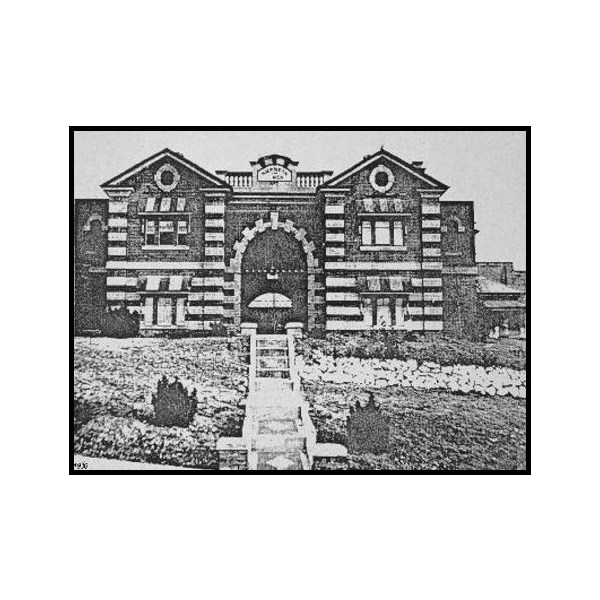
Boggo Road Gaol 1936
In 1863, land off Boggo Road was surveyed and set aside as a government reserve before being proclaimed a gaol reserve in 1880. The first cellblock opened on 2 July 1883, and over the years many other buildings came and went on the site. The first buildings were built by Robert Porter, contained 57 cells and were constructed using materials from the demolished Petrie Terrace Jail. In 1903 a prison was built to hold female prisoners. This later became known as the No.2 Division, and is now the only prison building still standing. It is
heritage-listed. The 'No.1 Division' built in 1883 was the scene of 42 hangings, including the hanging of Ernest Austin in 1913—the last execution in Queensland. A new prison was built around the perimeter of No.1 prison during the 1960s and No.1 prison was demolished leaving area for an oval and recreational facilities for the newly built prison and this prison had running cold water and
toilet facilities in all cells. Under the oval was the facility that became known as the "black hole" where prisoners were subjected to "punishment". The "black hole" continued in use until the late '80s.
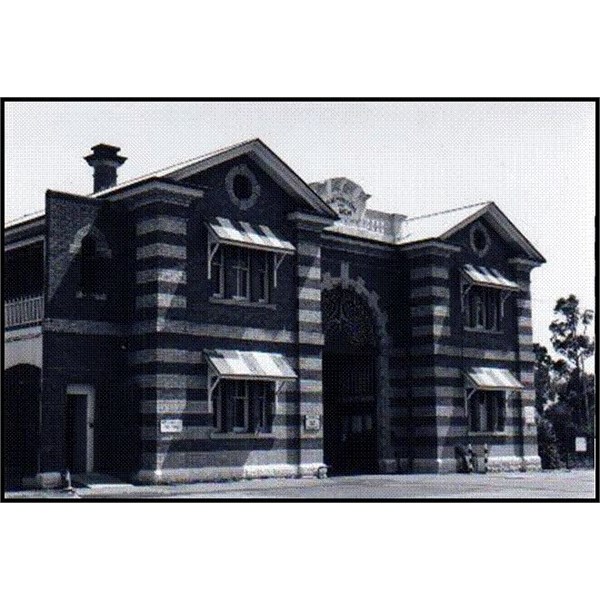
Boggo Road Gaol, Brisbanes maximum security prison
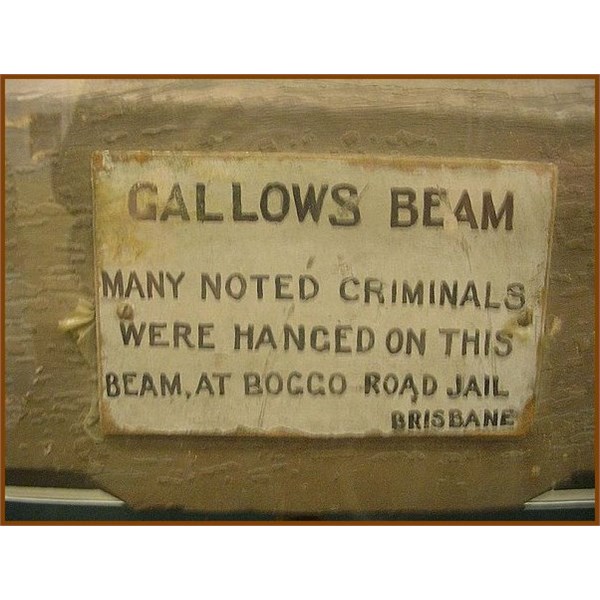
Plaque on gallows beam used at Boggo Road Gaol
Protests at the gaol during the 1970s saw inmates undertake hunger strikes, roof top protests, and rioting over the poor conditions and treatment. The prison was constantly in the headlines and became notorious around Australia. Cells did not have any form of sanitation and facilities for washing were lacking. Prisoners were required to use a bucket through the evening for
toilet breaks and empty it, or 'slop out', in the morning. A Queensland Government inquiry into the living conditions of State prisons found Boggo Road to be outdated and inadequate for prisoners' needs. No.2 Division was closed in 1989. No.1 division was closed in 1992 and was demolished in 1996 (a small section of what was "C5" and guard tower still remain). A modern (by 1960's standards) prison for women operated adjacent to this site until 2000 and was demolished in 2006.
Since 1992 the No.2 Division has been
home to the Boggo Road Gaol Museum, which featured displays of prison-related artefacts. Throughout the 1990s ex-officers conducted guided tours of the site, and from 2003 the museum and tours were operated by the Boggo Road Gaol Historical Society, a non-profit incorporated association of volunteers. Like many other similar
places around the country, the site also hosted ghost tours.
Redevelopment of the surrounding site began in 2006, leading to the temporary closure of the Boggo Road Gaol historical site. The No.2 Division prison buildings will be preserved according to its
heritage listing. It is expected to re-open around 2011. The redevelopment will be called Boggo Road Urban Village and will be completed in 2010.
The gaol was originally designed to cater for 40 male prisoners serving as a holding place for prisoners heading to St Helena Island in Moreton Bay. However by 1989 there were 187 male prisoners and the women's facility had around 200 additional prisoners.
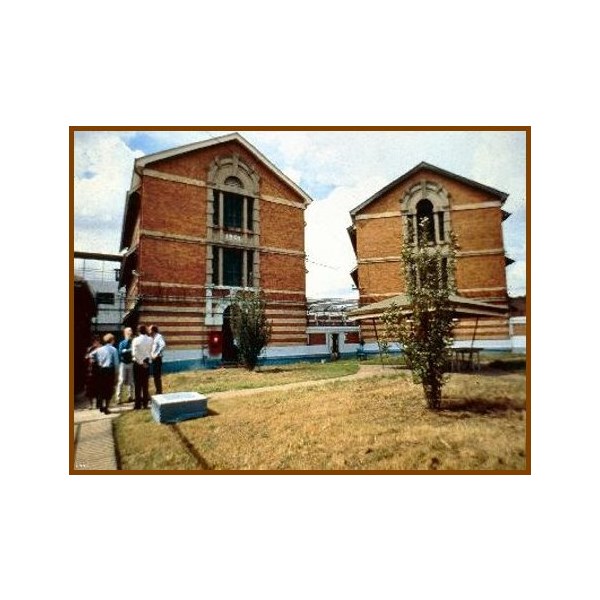
Boggo Road Gaol No 2 Division and Remnant No 1 Division
But in the history of Boggo Road Jail, there was one prisoner who didn't quite fit the mould. Arthur Ernest Halliday, otherwise known as 'Slim' - a convicted murderer, Slim's mind was focused on one thing, and one thing only - escape. Slim's plans were laid out in such intricate detail that the press of the day labelled him 'The Houdini of Boggo Road'. Freedom, however, proved somewhat elusive for Slim. After a particularly daring escape attempt in the late 1950s, prison officials acted. They welded his bed to the wall, they reinforced his door, they put on extra heavy-duty bolts and padlocks to make sure that he'd never escape again. He didn't.
Loss of
liberty has always been a significant factor in cases of prisoner unrest. Although a strict regime can usually keep things under control, in 1977, an inmate by the name of
John Andrew Stuart found he could push the system to its limit. Together with petty criminal James Finch, he had been convicted of what at the time was Australia's worst mass murder - the firebombing of
Brisbane's Whiskey Au Go Go nightclub.
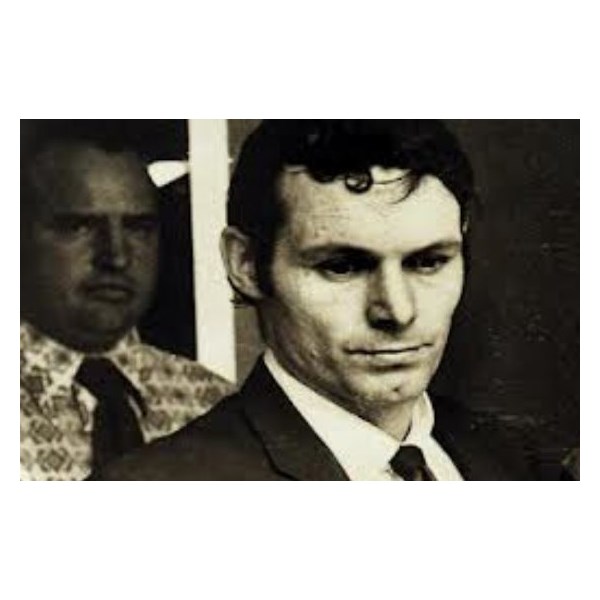
John Andrew Stuart
A violent and desperate man, Stuart was prepared to go to extreme lengths to gain publicity. He escaped from his cell and fled to the roof of 'A' wing, where for the next two days, he staged a protest proclaiming his innocence. Ironically, less than two years later, shortly after staging a hunger strike, he was found dead in his cell. Very little survives of Boggo Road today. Some may say that's a good thing. It was finally decommissioned in 1992 after a State Government inquiry found that it was unsuitable for continued use as a prison. But for those that experienced confinement at Boggo, the memories will stay forever.
Notable prisoners
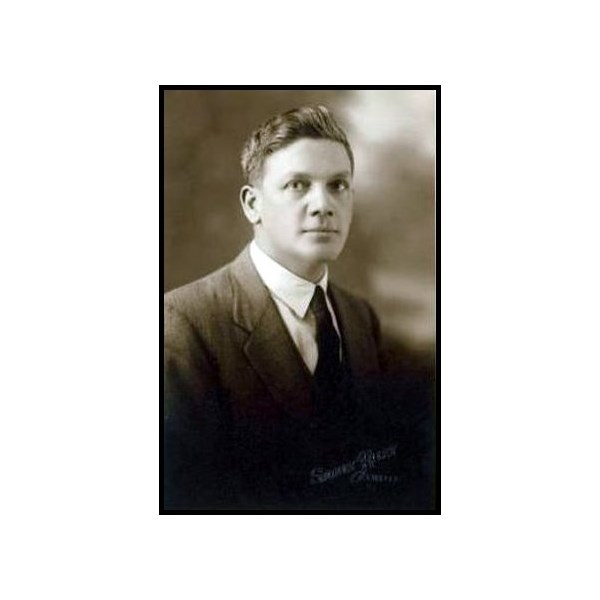
Senator Gordon Brown
Hon.
Gordon Brown – a former President of the Australian Senate.
James Finch and Andrew Stuart – the "Whiskey Au-Go-Go" murderers.
Arthur 'Slim' Halliday – murderer and escapologist.
Nathan Jones – actor and professional wrestler.

Nathan Jones
Before his career as a wrestler, Jones was sentenced to 16 years in 1987 at the age of 18 to Boggo Road Gaol for eight armed robberies between 1985–1987, two of which occurred in Tasmania. During the robberies, he became one of Australia's most wanted and ended up serving seven years in a maximum-security prison, in 1994 Jones was given one year work release, before being discharged at the age of 25. While in prison, he was introduced to the sport of powerlifting. Within a short space of time, he became the National Powerlifting Champion of Australia.
Patrick Kenniff – also known as Queensland's last bushranger.
Debbie Kilroy – prisoner rights activist, founder of Sisters Inside.
Craig Petersen – heavyweight boxing champion.
Michael Peterson – Australian surfing legend.
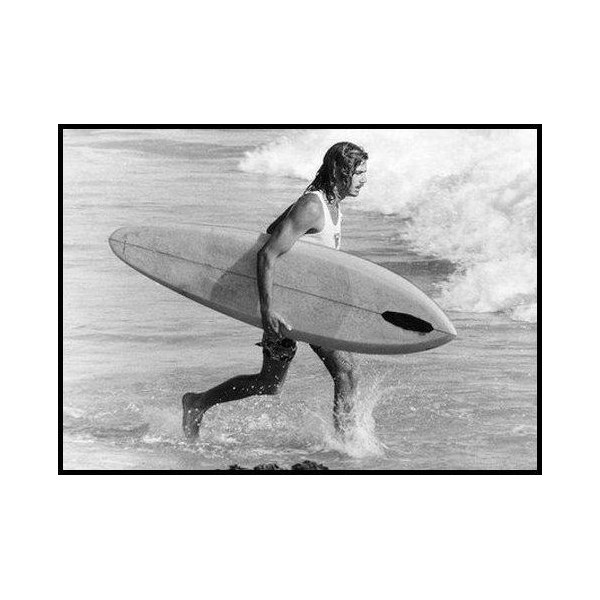
Michael Peterson (surfer)
In 1977, in front of 20,000 people, Michael Peterson beat future four times world champion Mark Richards to win the first event of the surfing world tour. It was his last competition and he was only seen occasionally until 1983 when he was arrested in a 15-car police chase from Coolangatta to
Brisbane. He never surfed again and, after years in Boggo Road gaol, he was finally diagnosed with paranoid schizophrenia. He died at the age of 59 after a heart attack
Ellen Thomson – the only woman hanged in Queensland.
Karen Tonkin - Political Prisoner Framed
42 prisoners were hanged at the Gaol.
James Gardiner 1864 1883 Scotland Murder of Ada Gardiner at
Rockhampton
Jango c.1866 1883 Australia (Aboriginal) Murder of Mrs Eliza Mills at
Dingo
George 1858 1883 Australia (Aboriginal) Rape of
young girl at
Rockhampton
Walter Edward
Gordon 1857 1885 England Murder of Walter Bunning on
Darr River Downs station.
Tim Tie 1856 1886 China Murder of a man near Dulbydilla
Wong Tong 1857 1886 China
Christopher Pickford 1856 1887 England
Ellen Thompson 1846 1887 Ireland Murder of her husband William Thompson at
Port Douglas John Harrison 1860 1887 England Murder of William Thompson at
Port Douglas
Edmond Duhamel 1851 1888 France
Sedin 1864 1888 Java
Donald c.1863 1892 Australia (Aboriginal)
Francis Charles Horrocks 1875 1892 Queensland
George Gleeson 1865 1892 India
Leonard William Moncado 1850 1892 Chile
George Thomas Blantern 1858 1893 England
Hatsuro Abe 1863 1894 Japan
Mi Orie 1866 1895 Malaita Island murder of old white man near
Bundaberg
Narasemai 1862 1895 Malaita Island murder of old white man near
Bundaberg
Sayer (Safhour) 1870 1895 Malaita Island
Jacky 1864 1895 Australia (Aboriginal)
Frank Tinyana 1858 1895 Filipino
Willie Broom 1870 1900 Australia (Aboriginal)
Charles Beckman 1859 1901 Germany murder of Alfred Anderson at McCarneys Creek.
Wandee 1881 1901 South Sea Islands
John Rheuben 1846 1901 Portugal
Arafau 1879 1901 South Sea Islands
David Alexander Brown 1846 1901 USA murder of Graham Haygrath at Charters Towers
Patrick Kenniff 1865 1903 NSW Murder of a police constable George Doyle
Sow Too Low 1875 1903 Malaita Island Murders of David Johnson,
John Martin and Alice
Gunning
Gosano 1870 1905 South Sea Islands Murder of
John Parsons at
Ingham
James Warton 1845 1905 Ireland Murder of William Munday at Toowong
Johannes 1867 1906 Ceylon (Sri Lanka) Murder of police officer A. G. Price at Mackay
Twadiga 1876 1906 Solomon Islands Murder of
young boy Charles Baulch at Mackay
Look Kow 1844 1906 China murder of Lee Choy Yuen at
Townsville
August Millewski 1855 1907 Germany murder of Wallum Nabby at Nanango
Bismarck 1886 1909 Australia (Aboriginal) murder of Mrs Janet Evitts at Nundah
Arthur
Ross 1888 1909 England murder of James Muir (Bank Clerk) at Gayndah
Alexander Bradshaw 1882 1910 Queensland murders of George Sutherland and his wife of
Normanton
George David Silva 1884 1912 Queensland/Ceylon murdered six members of the Ching family near Mackay
Charles Deen 1865 1913 Ceylon murdered his friend Peter Dina at
Innisfail
Ernest Austin 1890 1913 was the last person executed by Queensland. Austin was born in Victoria. He was convicted of raping and murdering 12-year-old Ivy
Mitchell at Cedar Creek road near Samford
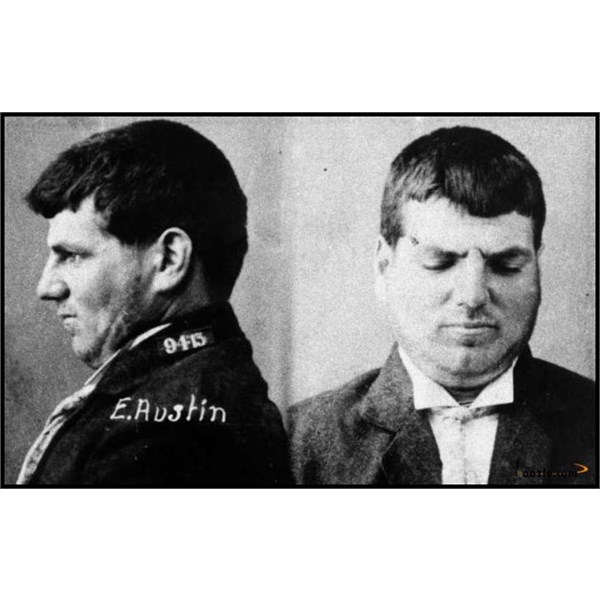
Prison mugshot of Ernest Austin 1913
.